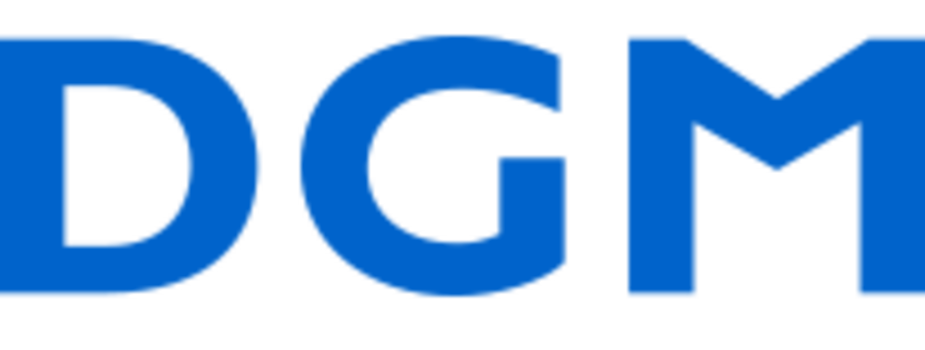
The CLASCO project aims for a universal and digitized laser-based post-processing method for the production of functionalized parts with complex shapes is being developed in the EU-funded CLASCO project. 12 international project partners from science, industry, research and application are united in the CLASCO project. The project is coordinated by the Technical University of Dresden. In our exclusive interview series, the CLASCO project partners introduce themselves in the areas of CLASCO Machine, Optics, Process Monitoring, Sample Preparation through Additive Manufacturing, Artificial Intelligence, Strategy and Business Model as well as Circularity and Sustainability.
Get to know the CLASCO project consortium member in the area of Artificial Intelligence:
1. How does Z-Prime intend to contribute to the CLASCO project's goal of climate-neutral laser surface functionalisation?
Defect Monitoring to Minimize Scrap
• Z-Prime will employ sophisticated machine learning and AI solutions to monitor and detect potential defects in real-time. This proactive approach ensures that faulty components are identified early, thereby minimizing scrap and reducing wastage.
• By leveraging advanced signal processing, enabled by a comprehensive digitalization and data validation methods, Z-Prime ensures that the Machine Learning module receives clean and organized data. This facilitates unbiased correlation and sensitivity analyses that will be crucial for detecting potential defects
Closed Loop Control
• Z-Prime's system will implement closed-loop control mechanisms, making use of online measurements to predict potential formation of defects. With the objective of achieving zero defects, the system will respond in real-time to deviations, ensuring consistent quality and reducing the need for post-process corrections.
• Beyond the current state-of-the-art, Z-Prime aims to shift from monolithic AI systems to hybrid learning mechanisms. By capturing a broader spectrum of events throughout the manufacturing and treatment lifecycle, Z-Prime's system can respond more dynamically to changes and prevent defects with higher precision.
Process Parameters Optimization
• Instead of relying on costly and time-consuming trial-and-error methods, Z-Prime will focus on optimizing process parameters from the onset. By using machine learning and AI-driven insights, the CLASCO project can determine the optimal process window more efficiently.
• The multi-objective approach adopted by Z-Prime is not just about process reliability but also emphasizes energy efficiency. By balancing energy usage, minimizing production time, and ensuring process reliability, the project will be a step closer to achieving its climate-neutral goal.
2. Can you discuss any specific technological solutions that Z-Prime is developing or has developed that are aligned with the objectives of the CLASCO project?
Data Acquisition and Integration with the CLASCO Machine:
• Z-Prime has been working on a state-of-the-art data acquisition module tailored to seamlessly integrate with the CLASCO machine. This module is designed to tap into the vast array of sensors embedded within the machine, allowing for precise extraction of real-time measurements.
• Beyond mere data extraction, our module offers control capabilities, giving operators the ability to tweak and refine the machine's operations based on real-time feedback.
• Recognizing the importance of scalability and distributed processing, this module has been architecturally designed to fit right into Z-Prime's platform ecosystem. This integration ensures that data is not only stored securely in the cloud but is also available for computational processing, making use of Z-Prime's robust cloud infrastructure.
Machine Learning and Artificial Intelligence Solutions:
a. Defect Detection:
Capitalizing on the latest advancements in machine learning, Z-Prime is working on the development of a solution that analyzes the collected data for potential defects.
b. Control Input Suggestions for Defect Prevention:
Going beyond mere detection, Z-Prime's AI algorithms will be designed to suggest control inputs that can potentially prevent the occurrence of defects. By leveraging the insights gathered from the vast amount of data processed, our solution provides actionable recommendations that can drastically reduce defect rates.
c. Continuous Learning for Improved Estimations:
Recognizing that the manufacturing landscape is ever-evolving, Z-Prime will leverage continuous learning capabilities to improve estimations as more data become available. This way, as more data become available, the platform will be able to suggest the optimum process window parameters.
3. How do Z-Prime's customised solutions support digitalisation and process optimisation in line with the CLASCO project's focus?
• Customized Data Integration: Z-Prime’s platform integrates with CLASCO's specific sensors, ensuring accurate data collection tailored to laser manufacturing processes.
• Enhanced Digitalization: Z-Prime’s facilitates real-time representation of ongoing manufacturing processes, promoting efficient State Space Definition and advanced signal processing.
• Process Window Optimization: Utilizing the vast data repository, our platform employs ML/AI modules to suggest optimum process parameters. This enhances process reliability, reduces energy consumption, and achieves desired product specifications.
• Future-Readiness: The modular architecture of our platform ensures adaptability, preparing for potential future advancements in the CLASCO project.
4. In what ways does Z-Prime plan to collaborate with other partners within the CLASCO project to advance laser-based surface functionalisation technologies?
NIL: Communication with the PLASMO sensor.
SYLAS and TUD: Correlation of the collected signals with specific process qualities to determine the existence of a defect.
SYLAS: Collaborate towards the robust and reliable communication for data collection and control.
SYLAS and NIT: Data collection and direct communication with CLAMIR. Furthermore, we will collaborate to devise effective and efficient methodologies for the control of the laser process.
SurFunction - TUD: Collaboration to identify the influence of specific laser parameters on the final functionalization of the material surface.
DGM/S2i: Promotion and Exploitation of the results.
ABC: Support in the sustainability activities.
Thank you to Z Prime for the information.

